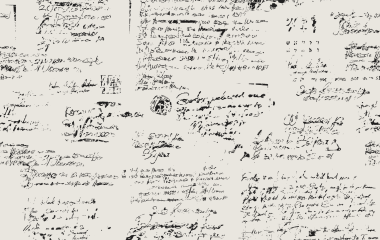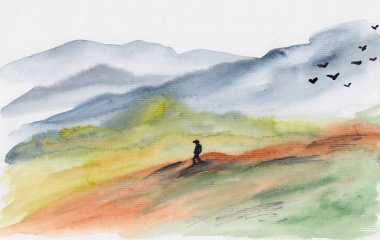
A history book, a law book[1], a book of theology, editorial comments, a book of philosophy, a description of G-d, a code of ethics, a lesson on current events. All of the above could describe what type the book the Torah is.
But perhaps most important is the definition given by Rav Simlai, a third century Amora living in Israel. “Rabbi Simlai taught: Torah! Its beginning is chesed, kindness, and its end is chesed, kindness” (Sotah 14a). If the introduction to a book is kindness and its conclusion is kindness it means that all contained therein is also kindness.
One would think that the opening act of kindness Rav Simlai is referring to is the act of Creation itself. That is how the Torah begins and moreover Creation is a great act of kindness. G-d had no need to create a world but did so as an act of kindness for the benefit of man. “Olam chesed yibaneh, the world is built with kindness” (Tehillim 89:3). A beautiful world; flora and fauna, rivers and seas, birds and vegetation, mountains and valleys, sunrise and sunset, gifted to man to “fill and conquer” and to enjoy. So much so the Jerusalem Talmud (Kiddushin 4:12) says that man will have to give an accounting for the pleasures of this world of which he did not partake. There is so much opportunity to do good, to help others, to bring joy to many and build a wonderful society.
Yet that is not what Rav Simlai had in mind. “Its beginning is of kindness, as it is written: ‘And the Lord G-d made for Adam and for his wife garments of skin and clothed them’” (Breisheet 3:21). This is rather amazing. Not so much because it’s not quite the beginning of the Torah but more so because of the context of this act of kindness. The only reason Adam and Chava needed clothes was because they had sinned by eating the forbidden fruit. Up until that point the physical and spiritual worlds worked in complete harmony and complemented each other. With sin there was a rupture and the private physical parts of one's body needed to be covered up[2].
In other words, the great act of kindness that marks the opening act of the best kindness is one done to a sinner. A key, perhaps primary, emphasis of kindness is to help those who may not be worthy of such help. This is the basis for a rather unusual law. Under normal circumstances if someone needs help loading something onto an animal and someone else needs help unloading a burden from an animal, we must help the one unloading. However, the Talmud (Bava Metzia 32b) rules that such is not the case if the one loading an animal is a habitual sinner. In such a scenario we must help the sinner first. As the Tosafists (Pesachim 112b) explain, we are concerned that one will express unwarranted hate towards the sinner. To subdue those potential feelings and possible expressions of hate, the halacha insists we first must help the sinner – a Talmudic example of cognitive dissonance.
Taking this a step further Avraham Avinu argued and argued and argues some more that G-d should extend His chesed to the people of Sedom – people who the Torah itself describes as “evil and sinners to G-d very much” (Breisheet 13:13). And G-d agreed in theory to spare the people – if only 10 righteous people could have been found.
When thinking of this teaching, I can’t but think of another teaching of Rav Simlai. “Rabbi Simlai taught: 613 mitzvot were stated to Moses, 365 prohibitions corresponding to the number of days in the solar year, and 248 positive corresponding to the person’s limbs” (Makkot 23b). The acts of chesed at the beginning of the Torah – clothing Adam and Chava – and at the end of the Torah – the burial of Moshe – were acts carried out by G-d to man. We as G-d’s partners created in His image must do the same. And that is why we were given the 613 intervening mitzvot, mitzvot that begin and end with chesed[3].
The connection between the mitzvot between man and man and chesed is clear. Less clear, but no less, and possibly more, important is the connection between chesed and mitzvot between man and G-d. Here too some are relatively obvious. We fast in order to “taste” what hunger feels like and thereby provide for the hungry. We leave our home on Sukkot to develop compassion for the homeless. We rest on shabbat to ensure we do not enslave others. For other mitzvot one must dig deeper but there is no mitzva between man and G-d that does not also contain a message that helps our relationship to man.
G-d does not need our mitzvot. Rather, by fulfilling the mitzvot between man and G-d we become closer to G-d. Yet one can remain close to G-d only if we follow in His footsteps and bestow kindness to others. That is the primary goal of the Torah.
[1] This is Rashi's understanding and hence he wonders why the Torah does not begin with the first law given to the Jewish people.
[2] It is for this reason that upon the physical death of someone and departure of the soul the mourners rip their clothes, symbolizing that the tension between the physical and spiritual is no longer.
[3] If one wants to apply this literally, the first mitzva of the Torah is having children. What greater act of kindness is there than that of giving life to others. And the last mitzva of the Torah, commonly expressed as a the mitzva to write a Sefer Torah (fulfilled today by having a Jewish library, see Shulchan Aruch, Yoreh Deah 270, 2) is more accurately a mitzva to teach others as the Torah commands, “write down this poem and teach it to the people of Israel” (Devarim 31:19).



